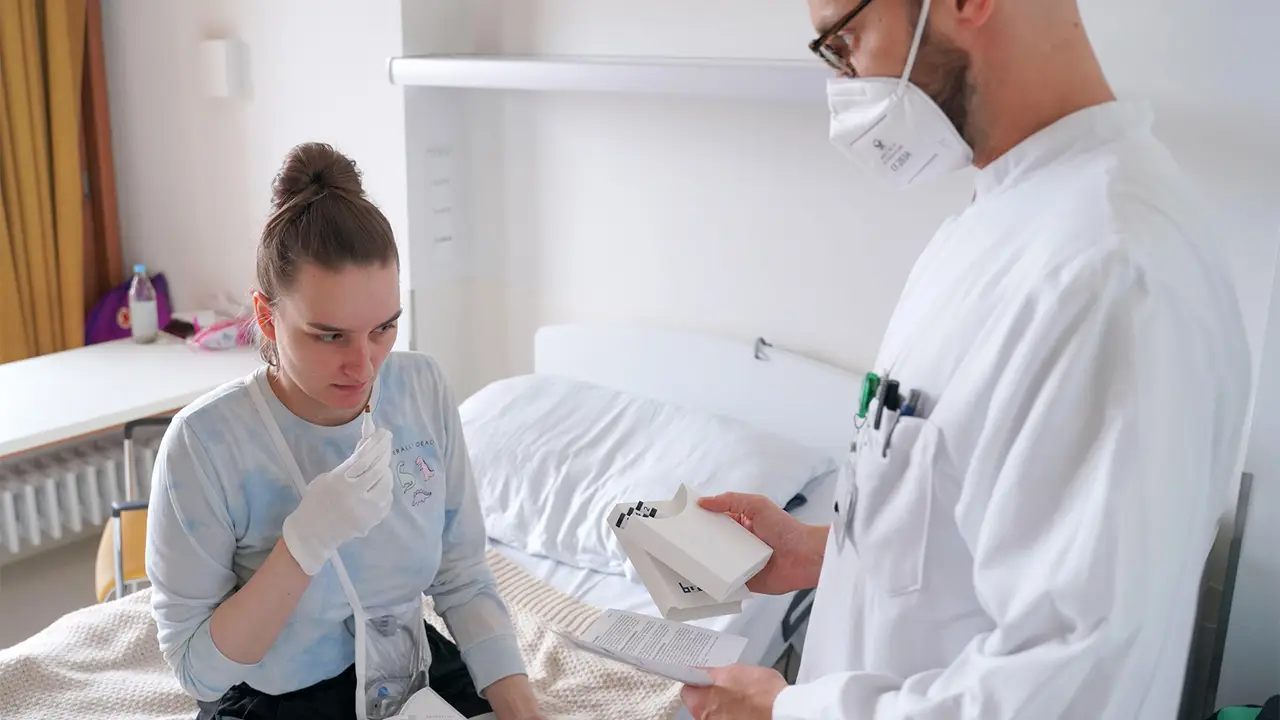A breakthrough procedure guided by imaging that takes just 10 minutes may offer relief for long COVID patients suffering from anosmia, or loss of smell, according to new findings to be presented next week at RSNA 2023.
Recent studies indicate that up to 60% of individuals who had COVID-19 experience parosmia, a condition where the sense of smell becomes distorted.
While many recover their sense of smell over time, some endure persistent symptoms for months or even years, and a few develop phantosmia, which causes them to perceive odors that aren’t present.
Researchers explored the efficacy of injecting an anesthetic directly into nerves on one side of the neck to stimulate the nervous system. In a study involving patients treated with computed tomography-guided “stellate ganglion block,” 59% reported improved symptoms after seven days.
“The initial patient showed remarkably positive outcomes almost immediately, with continued improvement leading to complete resolution of symptoms by four weeks,” said lead author Adam C. Zoga, MD, MBA, a professor of musculoskeletal radiology at Jefferson Health in Philadelphia, in a statement released on November 20 by the Radiological Society of North America.
“We have been surprised by some outcomes, including nearly 100% resolution of phantosmia in some patients throughout the trial.”

A total of 54 patients, referred by ear, nose, and throat specialists after experiencing at least six months of post-COVID parosmia resistant to conventional treatments, participated in the study.
Using CT scans to guide needle placement at the neck’s base, researchers administered injections into the stellate ganglion, which transmits signals to the head, neck, arms, and parts of the chest.
Zoga and colleagues supplemented the anesthetic with a small dose of corticosteroid, speculating that COVID-19 may cause nerve inflammation.
Thirty-seven patients returned for follow-up evaluations, with 22 (59%) reporting symptom improvement one week after treatment.
By the one-month mark, 82% noted significant and ongoing improvement, and by three months, subjects experienced an average 49% symptom improvement, ranging from 10% to 100%.
Following a six-week interval, researchers administered a second injection on the opposite side of the neck (contralateral) to 26 patients.
Patients who had not responded to the initial injection did not benefit from this treatment. However, 86% of those who showed improvement after the first treatment reported further alleviation of symptoms following the contralateral injection.
“Previous treatments have proven ineffective. This injection is showing efficacy,” Zoga emphasized in the announcement.
